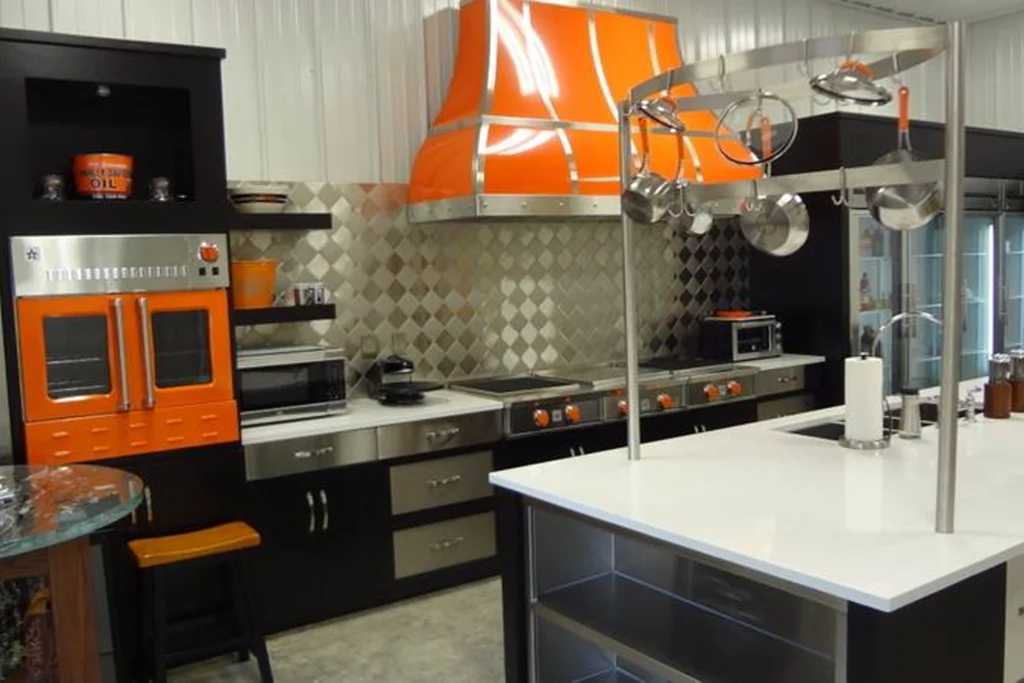Smoke extractors are very essential kitchen appliances that work by removing smoke, odors, and grease from our cooking space. The sweet aroma from the new recipe you are trying only smells nice around the kitchen area. However, should it find its way to the neighboring rooms it becomes a nuisance.
The same sweet aroma coming from your cooking could smell very unpleasant if you came across it moments or days later. Whether you are upgrading an old one or installing a smoke extractor for the first time, you do not have to break a sweat with this project. This article gives steps to follow when you want to install one.

Range hood without cabinets is no problem
Locate the Switch Box and Turn Off the Power
The process begins by taking the necessary safety measures to avoid accidents and fires in your home. To do that, locate the switch box, which is usually in the storeroom, basement or hallway. Once you come across it, find the extractor switch and flip it up to turn the power off. This way, you can be sure that the power supply to the exhaust fan is cut off.
Remove the Exhaust Fan
Start this step by detaching the exhaust fan parts so that they do not fall off when removed. They could break and damage the smoke extractor, something that could work against you if you decided to resell it. To remove the extractor, loosen the screws by use of a power drill. An extra pair of hands comes in handy; to hold the extractor while you loosen the screws and wires that supply electric power to the exhaust fan.
Determine the Location of the Smoke Extractor
The next step involves determining the location of your exhaust fan. The fan must fall somewhere above your cooking stove so that the rising fumes will be absorbed. The location of your new exhaust hood will be determined by whether it is ducted or ductless and whether there are cabinets or none over the cooktop.
Mark and Cut the Holes for the Pipework
Using a paper framework provided together with the extractor manual, mark out the section where the aperture will disappear into the ceiling. If a paper framework is not provided, you can use a tape measure to measure and mark the exhaust section. Then with the use of a general-purpose saw, carefully cut out the marked area and remove the circular ceiling part. Repeat the process with the exterior part where the aperture leaves the house.
Install the Aperture Cap inside the House and on the Exterior Wall
With the use of a power drill and a set of small screws, install the vent cap on the ceiling or on the wall. Place the aperture cap on the cutout section and fasten the screws to attach it before applying a light thin layer of caulk to seal off any openings. Repeat the same process with the exhaust cap on the exterior where the vent leaves your house.
Install the Mounting Hardware
Using a stud finder, locate studs on the ceiling or wall where the exhaust fan installation hardware should fall. Once you have found the studs, place the installation hardware and use a bubble level to align the hardware so that they are even and level. Then use a pencil to mark out the area before tightening the screws to fasten the hardware.
Install the New Exhaust Fan
Once the hardware are on and firmly onto the ceiling or on the wall, and they are level, it is time to install the exhaust fan. If the exhaust fan came without the installation hardware, invite an extra pair of hands to help you lift the extractor in place and mark out the section where it will fall. For the installation hardware way, slide the exhaust fan onto the hardware and confirm if it is tight. If you do not have the installation hardware, have another person hold the extractor in place as you fasten the screws with a power drill.
Do the Wiring and Turn the Power Back On To Test the Smoke Extractor
For a ducted exhaust fan, connect the wiring to the fan by joining the different colors of wires to their corresponding colors from the power supply. Having done that, turn electric power supply back on to test the workability of the exhaust fan.
If you are not very good in electrical connections, it is always wise to invite an electrician or smoke extractor specialist to do the job for you. They will save you time and the headache you would have went through with the project.
